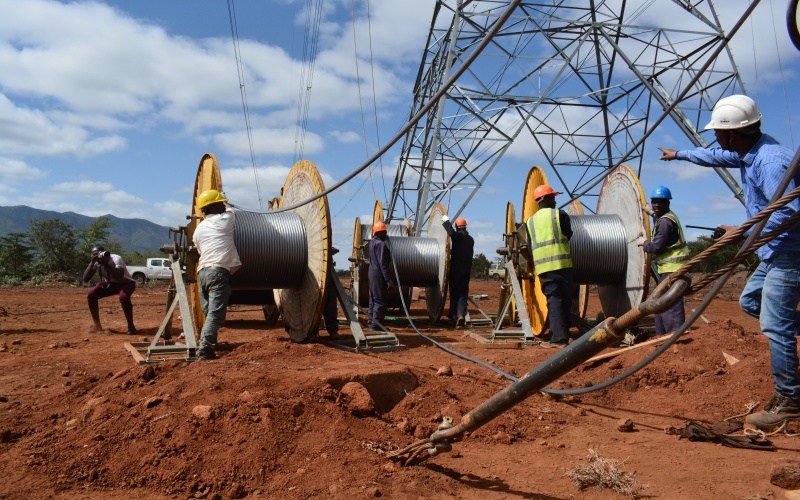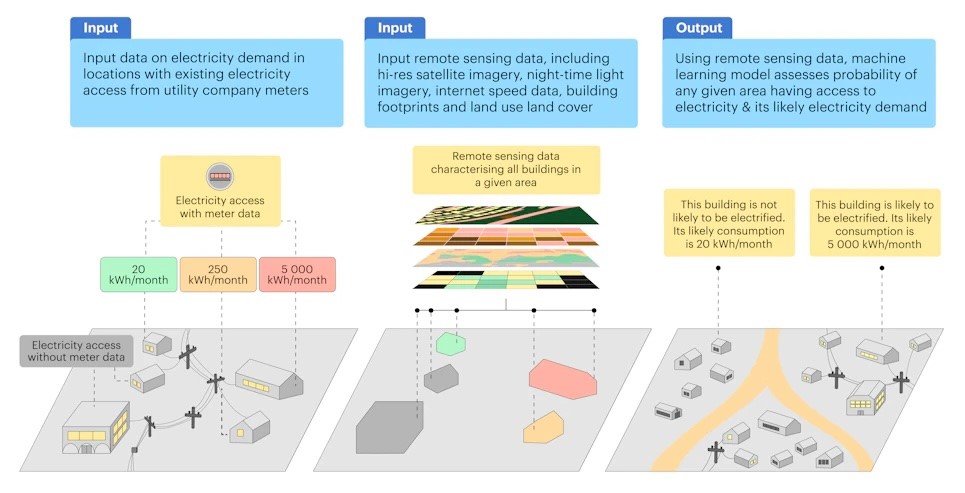
The International Energy Agency (IEA) and a group of research institutions have developed an AI-driven tool to help infrastructure planners and energy suppliers focus their efforts more efficiently as part of the drive to broaden electricity access in Africa.
Using the Open Energy Maps tool, modellers can identify which buildings are likely to have access to electricity already and which do not and can also estimate the current or anticipated electricity needs for every building in a country. It has been able to identify which buildings currently have electricity with greater than 80% accuracy and has achieved a 40% error reduction when estimating the electricity demand of buildings compared with other tools widely used today, according to the IEA.
The model has been developed by the IEA with researchers at the Massachusetts Institute of Technology, the University of Massachusetts Amherst, and the multi-institution Electricity Growth and Use in Developing Economies initiative.
It uses satellite images and available footprints of all buildings across Africa, then pairs information gained there with utility meter data on electricity consumption matched to the location of a given building or community. AI algorithms are then used to learn from high-resolution images of buildings to identify patterns that best correlate their image and location to a certain level of energy demand (see image below).
The algorithms process information such as whether the building is urban or rural, residential or commercial, and whether a community is connected by main roads to markets – a signifier of higher incomes and greater ability to pay for power. Examples covering Ghana, Senegal and Uganda are available on the Open Energy Maps website.
This approach helps identify settlements where an urban core is electrified, while buildings just outside of a town may not have electricity, or help identify areas of urban infill and informal settlements which may remain unconnected or underserved.
The IEA says the users of these buildings are among the most interesting customers for utilities and off-grid companies to target, as the cost to reach them is low, and their ability to pay may increase faster than other less well connected regions.

Overcoming headwinds
The need to speed up the pace of electrification in Africa is pressing. A key UN Sustainable Development Goal is to provide access to affordable, reliable and modern energy services for all by 2030, yet some 600m people in Africa still have no access to electricity. Progress has been complicated by the impact of the Covid pandemic and debt crises, which have affected the financial health of utilities, energy service providers and their potential customers.
Grid infrastructure is expanding slowly across the continent, while off-grid solutions using household-scale or mini-grid solar power supported by battery storage are helping to fill the gaps. The IEA estimates off-grid systems accounted for more than half of new connections in sub-Saharan Africa in 2022.
But the IEA says closing the access gap requires greater scaling. This can be slowed by traditional planning and customer acquisition approaches that rely on workers going village-by-village to assess electrification and energy needs at the community level.
The hope is that by combining the new model developed by the IEA with other tools, planners will more rapidly be able to conduct precise pre-feasibility studies for grid extensions, mini grids, and standalone systems. Companies should also be able to better target communities and buildings that are likely to have a higher ability to pay – these communities can then be used as staging posts to provide access to other nearby areas where people are less able to afford electricity.
Data from the model is also seen aiding spatial planning for distribution grids, generators and substations, as well as enabling more accurate sizing of power systems, especially for off-grid solutions, and making financial forecasting more accurate.
*More information is available from the IEA here
(Image credits: Top photo Shutterstock/Diagram IEA)

